Anubis is an Ancient Egyptian God who is most closely associated with death, the afterlife and the mummification process. In ancient Egyptian religion, he is mostly depicted as a canine or a man with a canine head. Anubis played several important roles in Ancient Egyptian mythology including protecting graves; guiding individuals to the afterlife; and in the “Weighing of the Heart”, an ancient Egyptian concept where your soul was judged. Anubis was one of the most popular deities in ancient Egypt with his cult center being at Cynopolis in Upper Egypt. In keeping with his popularity, he is frequently depicted in ancient Egyptian art. His most famous statue is perhaps the Anubis Shrine which was discovered in the tomb of the famous Egyptian pharaoh Tutankhamun. Modern depictions of Anubis in popular culture are usually inaccurate portraying him as something of a satanic figure, while in ancient Egypt he was revered as a judicious God. Here are 10 interesting facts about Anubis including his history; myths; powers; worship and significance in Ancient Egypt; and portrayal in popular culture.
#1 ANUBIS IS DEPICTED WITH HEAD OF A DOG AND BODY OF A MAN
As with many gods from the ancient world, there are several variations of the name of Anubis, each indicative of a different part of his evolution. Before the arrival of the Greeks into Egypt in 7th century BCE, the god we today refer to as Anubis was actually referred to as “Anpu” or “Inpu”, meaning “to decay” signifying his early association with death. Anubis is thus a Greek rendering of the name. Moreover, after the Greeks, and later the Romans, arrived in Egypt and started exerting influence over the area, a composite of Anubis and the Greek god Hermes, “Hermanubis”, was created.
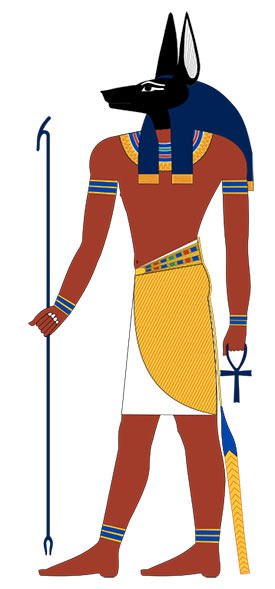
In both Anubis’ original Egyptian form and this much later Greco-Egyptian composite, he is depicted as having the head of a dog and the body of a man. For centuries this dog-like head was commonly associated with a jackal. However, recent DNA evidence suggests that the wild canines in the area from which the Ancient Egyptians may have drawn inspiration might instead have been types of wolves.
#2 HIS MOST IMPORTANT ROLE WAS IN THE “WEIGHING OF THE HEART”
Anubis played several roles in the Ancient Egyptian mythology. He was a protector of graves and cemeteries. As the dead were usually buried on the west bank of the Nile, Anubis was called khenty-imentiu, which means “foremost of the westerners”. Anubis was associated with mummification due to which he was called jmy-wt, which means “he who is in the place of embalming”. Anubis was most prominently associated with the afterlife. It is here that much of the most common mythology surrounding Anubis’ role is concerned.
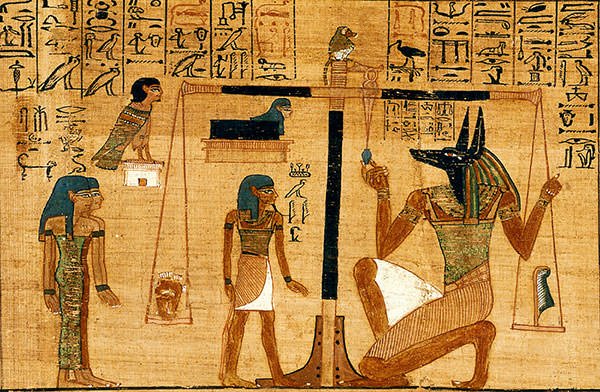
Anubis guided individuals from the world of the living to the afterlife. However, his most famous role was in the “Weighing of the Heart”. Ancient Egyptians believed that in your journey through the underworld, you are led into the “Hall of Maat” where your heart was measured on a scale opposite Maat’s “feather of truth”. Anubis would weigh the heart of the deceased individual. If the heart weighed less, the soul would be conducted into the afterlife; however if it it was found heavier, Egyptian demoness Ammut would swallow it and that would be the end of the person’s afterlife.
#3 HE WAS COMBINED WITH GREEK GOD HERMES TO FORM HERMANUBIS
In some versions of Egyptian mythology, the god Hathor, guided souls to the afterlife. However, because of his close connection with death and the process by which souls were judged and gained passage to the afterlife, Anubis began to gain a reputation in later Egyptian mythology as being a guider of souls. Hermes was a god in Ancient Greek religion and mythology who performed several roles which included him being a guider of souls to the underworld. While Anubis is not a messenger or trickster god in the same vein as Hermes, the two share the role in guiding souls to the underworld. This explains the merging of Hermes and Anubis that took place after contact with the Greeks leading to the composite figure of Hermanubis. He is depicted with a human body and a dog head like Anubis while carrying a sacred staff called caduceus which is associated with Hermes. Hermanubis was a popular deity during the period of Roman domination over Egypt.
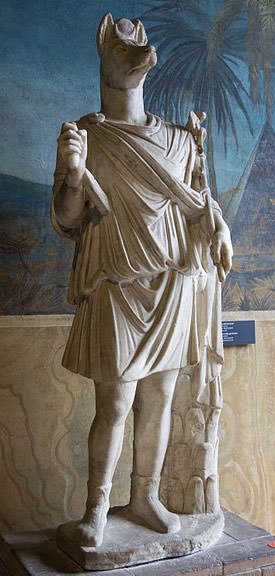
#4 HIS WIFE IS ANPUT WHILE HIS DAUGHTER IS KEBECHET
In many forms of ancient mythology, the parentage of certain figures is obscured or otherwise changes between different accounts of the stories, and in this respect, Anubis is no different. Different accounts give Anubis different parentage, which in turn can lead to different interpretations about his overall place and alignment within the Ancient Egyptian pantheon. The Egyptian Gods and Goddesses Ra, Hesat, Bastet, Nephthys and Osiris are all suggested in various combinations as parents of Anubis. Differences arise based on whose account one reads. Also later Greek accounts, such as that of Plutarch, differ from classical Egyptian ones. However, no matter his parentage, Anubis’ association with death and the underworld remains relatively constant. The wife of Anubis is Anput, goddess of funerals and mummification. Their daughter is the serpent goddess Kebechet, a goddess of purification.
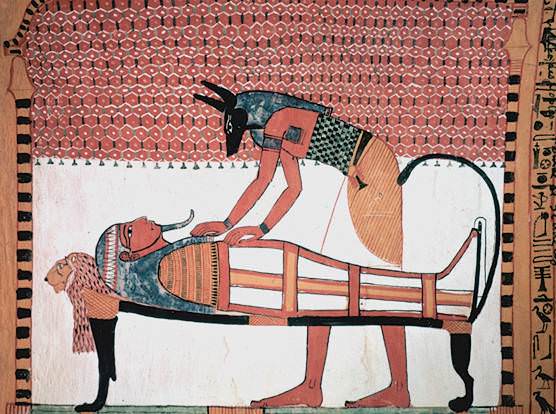
#5 HE RESTORES THE BODY OF OSIRIS IN THE OSIRIS MYTH
The Osiris myth is the most influential story in ancient Egyptian mythology. Osiris was the son of the earth god Geb and the sky goddess Nut. At the start of the myth, he rules over Egypt and there is order in the kingdom. However, he is murdered by his brother Set, who is associated with violence and chaos. Osiris’s wife Isis restores her husband’s body and conceives a son with him who is named Horus. When he becomes an adult, Horus challenges Set for the throne of Egypt. The conflict ends with the triumph of Horus; leading to restoration of order in Egypt.
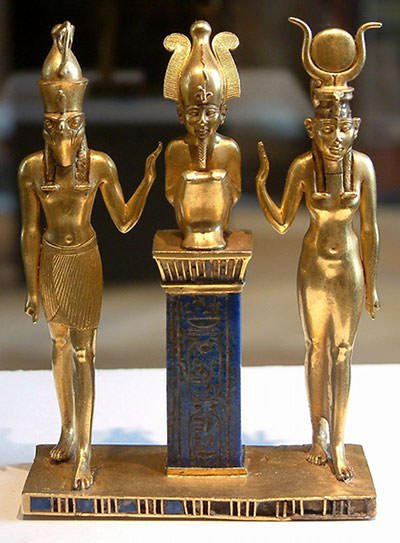
Anubis plays a role in the myth as an ally of Osiris. In fact, according to the myth, he is the son of Osiris and his sister-in-law Nephthys. When Osiris dies, it is Anubis who helps restore him to his body. It is due to this that Anubis became the patron god of embalmers. Apart from this myth, Anubis doesn’t appear frequently in ancient Egyptian myths. Moreover, because he is associated with death, he is often a figure in myths that looms more at the end of a story than one that is engaged throughout.
#6 HIS CULT CENTER WAS CYNOPOLIS IN UPPER EGYPT
Though he doesn’t appear in many myths, Anubis was an extremely popular God in Ancient Egypt. As the Ancient Egyptian paid much attention to death, Anubis gathered his own band of followers dedicated to worshiping him in particular. As it was Anubis who judged you in the afterlife, it was probably believed that worshiping him would lead to one’s body being respected at death, one’s soul being protected in the afterlife and one receiving a fair judgment for one’s life’s work. As Anubis prepared the mummy of Osiris in a myth, he became the patron god of embalmers. Moreover, wooden masks made to resemble Anubis were used by priests while performing rituals. Amulets of the god were also common. Cynopolis (Greek for “city of the dog”) in Upper Egypt was home to the cult of Anubis. However, there were shrines to him throughout ancient Egypt and he was worshiped across the land. When the Greeks gained influence in the region, Hermanubis, a merger of Anubis with the Greek God Hermes, was widely worshiped too.
#7 ANUBIS IS FREQUENTLY REPRESENTED IN ANCIENT EGYPTIAN ART
Anubis was one of the most frequently represented deities in ancient Egyptian art and later in Greco-Egyptian art. Artwork depicting Anubis or otherwise alluding to him can be found throughout the history of Ancient Egypt. He is the earliest god depicted on tomb walls and invoked for protection of the dead. The depictions of Anubis usually show him tending to the corpse of kings, presiding over mummification and funerals or standing with other gods at the Weighing of the Heart of the Soul in the Hall of Two Truths in the afterlife. A popular image shows him kneeling with his dog head holding the golden scale which is used to weigh the heart. Art depicting or associated with Anubis can be found in museums across the world. An Anubis statue with a dog head and a long wig can be found in the Metropolitan Museum of Art in New York while a Bronze figure of Anubis wearing armlets, bracelets and anklets can be seen in the British Museum in London. A statue of Hermanubis, meanwhile, can be found in the Vatican Museums in Vatican City.

#8 ANUBIS, IN HIS ANIMAL FORM, WAS GUARDING THE TOMB OF TUTANKHAMEN
When the famous discovery of the tomb of the Egyptian pharaoh Tutankhamun was made, the Anubis Shrine was found among the grave goods. The statue of the Anubis, depicted completely in animal form, was attached to the roof of the shrine. It crouched protectively at the entrance. This was because one of the roles of Anubis in ancient Egyptian mythology was to guard the spirits of the dead in the afterlife and to punish mortals who violated a sacred tomb. Made out of wood, the figure of Anubis in the form of a jackal is slightly more than 3 feet long. It is expertly carved to reveal the taut muscles of the canine deity. The life-size statue has gilded ears, collar and a scarf. Moreover, it is covered in black paint as the black color was the symbolic color of Anubis because it represented death and decay. The Shrine of Anubis is one of the outstanding objects of the Tutankhamen tomb. At present, it is on exhibit at the Egyptian Museum in Cairo.
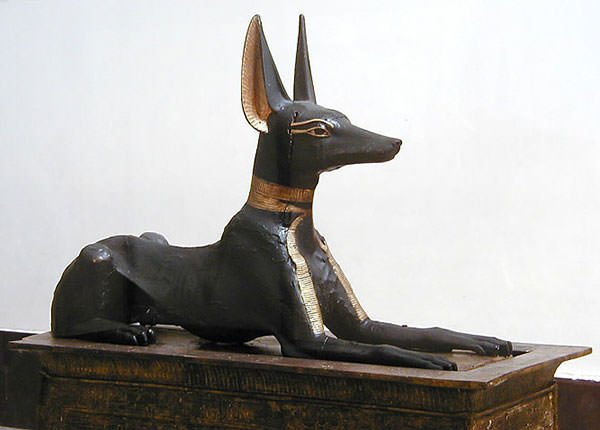
#9 ANUBIS POSSESSES THE POWER TO CURSE THOSE WHO DISTURB THE DEAD
As Anubis is associated with death and carries the scales upon which the heart is weighed in the evaluation of an individual’s soul, any “supernatural powers” related to him are more implied than explicit. As a protector of tombs who guarded the body after death, Anubis had the power to enforce curses on others while guarding the dead against curses. When the tomb of Tutankhamun was discovered, several people who entered the tomb died. This led to much talk about the Curse of Tutankhamun. It is interesting to note that it was Anubis who guarded the tomb of the pharaoh. As with Hades in Greek mythology, Anubis being associated with evil deathly powers are a mostly modern concept, likely derived in part from mapping Judeo-Christian notions of the afterlife and its morality onto Greek and Egyptian figures. Nevertheless, while many of his most fantastic powers are modern embellishments, the central role Anubis plays in Egyptian conceptions of death, moral judgment and the afterlife make him a powerful figure in Egyptian Mythology.
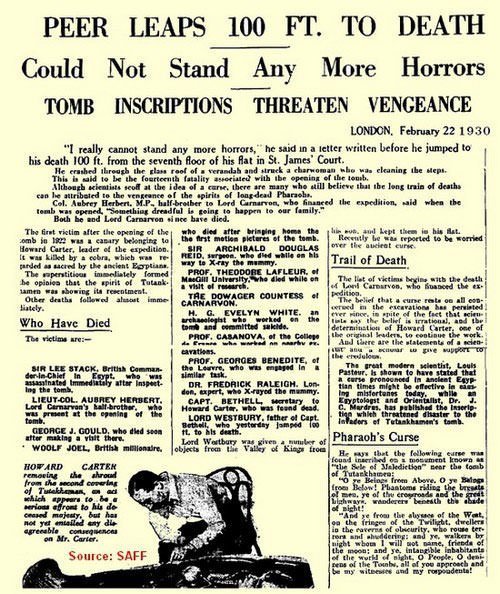
#10 MODERN DEPICTIONS OF ANUBIS IN POPULAR CULTURE ARE NOT IN KEEPING WITH HIS TRUE IMAGE
In modern representations, Anubis is often at best a fearful, powerful figure; and at worst a potentially malicious or villainous one. In the past few decades, he has exploded in popularity in popular culture. These modern depictions often play up Anubis’ role as a god of the dead and the afterlife in a more aggressive or otherwise malicious role than that was in Egyptian mythology. Series such as Stargate SG-1 and Yu-Gi-Oh! make use of such depictions. Also, authors such as Neil Gaiman in American Gods have incorporated Anubis into their works.
However, in classical Egyptian mythology, Anubis has a far more moral reputation. He is an ally to Osiris, whose resurrection myth has been of great interest to scholars for its potential influence on other belief systems. Moreover, while modern depictions tend to frame Anubis as something of a satanic figure, actually, within the Egyptian pantheon, his true alignment is far closer to that of a judicious figure who is at the center of Egyptian conceptions about death and the afterlife; and conceptions of morality surrounding the two.


numbers 1,2,3,4 and 5 are the most interesting
Hi there!
Wonderful article!
I was wondering if you are the original owner of the artwork at the start of the article?
I’m I writer, and I think it’s just beautiful so I’m trying to track down the owner to ask if they would consider letting me buy it for use as a book cover 🙂
If the art is not originally yours, I would very much appreciate any information
Many thanks,
E. L. Julian
Hi. Thanks for your appreciation. I searched the web and found this link: https://www.teahub.io/viewwp/JboiTh_free-mummification-in-ancient-egypt-computer-desktop-assassins/. Hope that helps.
Hello,
I don’t know if you still are after the artist behind the image.
It’s from the game Assassin’s Creed: Origins made by Ubisoft
amazing